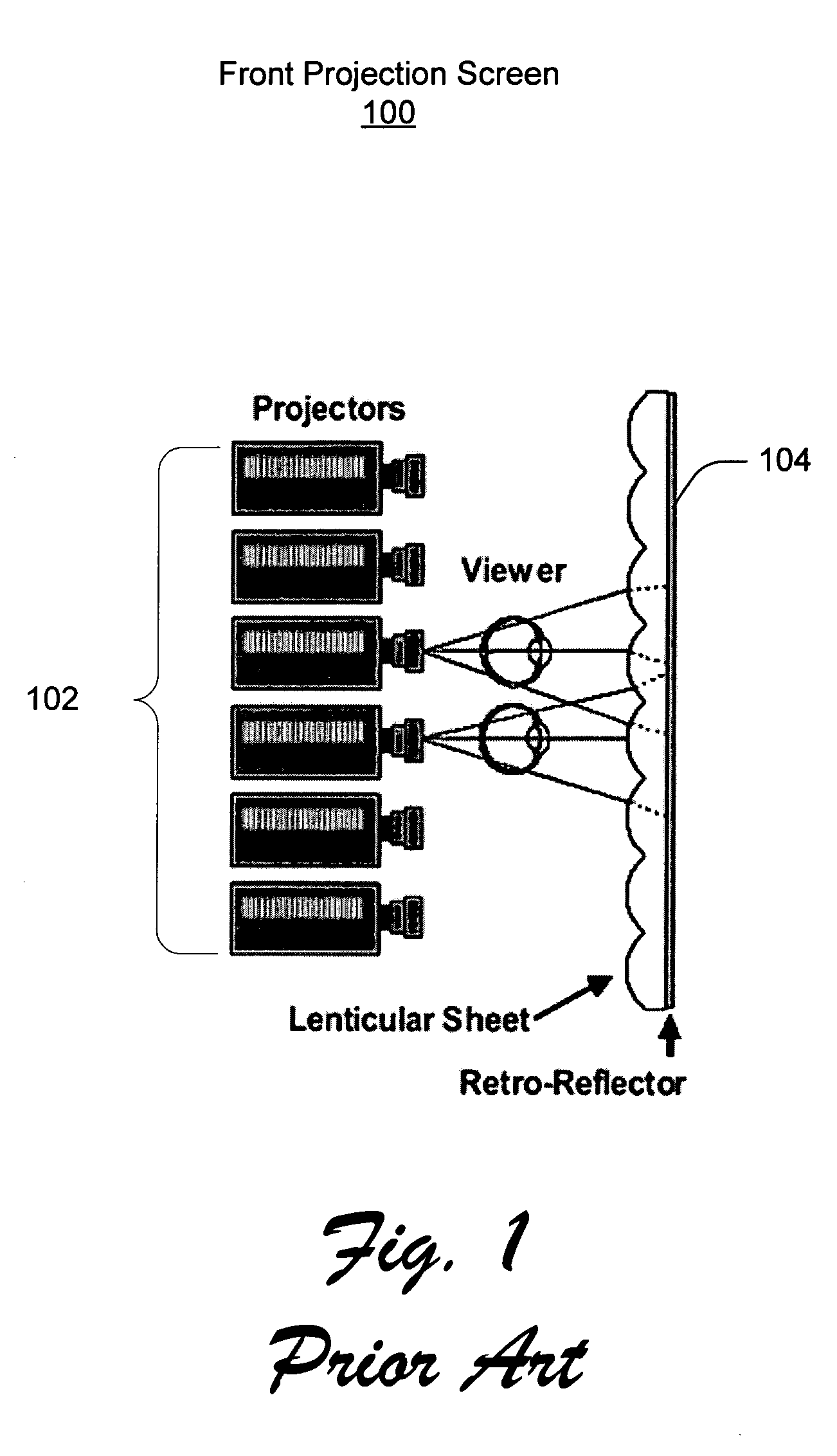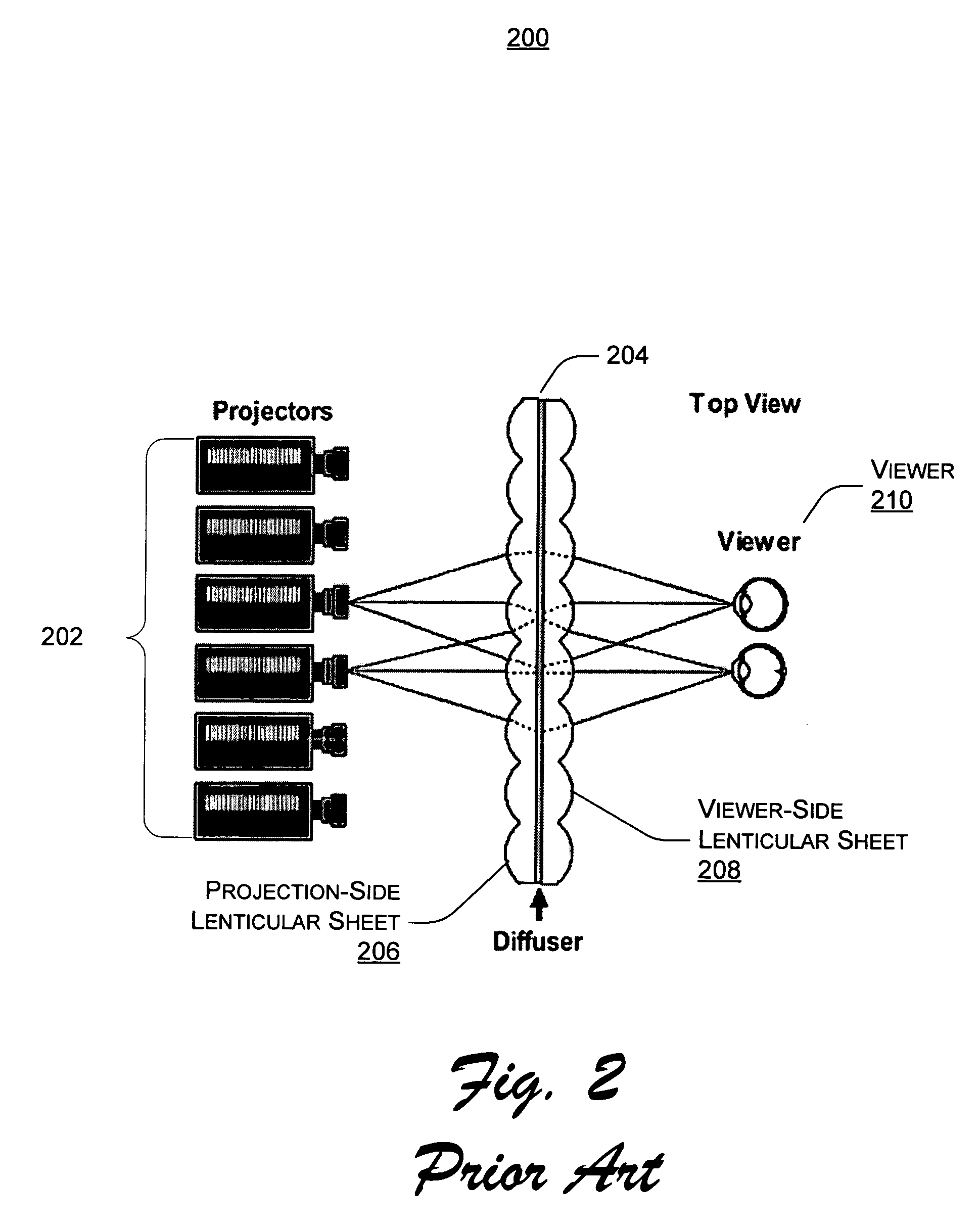Three-dimensional (3D) image projection
- Summary
- Abstract
- Description
- Claims
- Application Information
AI Technical Summary
Problems solved by technology
Method used
Image
Examples
Embodiment Construction
Overview
[0014] Lenticular screens have been used to generate 3D images for about a hundred years. Lenticular screens can be used to generate stationary 3D images, for example, on the cover of a book, or lenticular screens can be used in combination with electronic displays to generate dynamic 3D images. In the case of 3D LCD displays, the LCD pixels are right at the focus plane of the (vertical) cylindrical lenses of the lenticular screens. This means the light from each point on the LCD will only go into a specific horizontal viewing direction. If there are two pixel columns behind each cylindrical lens, then the 3D LCD display presents two different views, one for each eye, at halved horizontal resolution.
[0015] For 3D projection displays (i.e., non-LCD screens), the lenticular screen, or lenticular sheet, acts somewhat differently. A lenticular screen serves the function of recasting the reflected (transmitted) light toward the same direction of the projector (or the mirror im...
PUM
 Login to View More
Login to View More Abstract
Description
Claims
Application Information
 Login to View More
Login to View More - R&D Engineer
- R&D Manager
- IP Professional
- Industry Leading Data Capabilities
- Powerful AI technology
- Patent DNA Extraction
Browse by: Latest US Patents, China's latest patents, Technical Efficacy Thesaurus, Application Domain, Technology Topic, Popular Technical Reports.
© 2024 PatSnap. All rights reserved.Legal|Privacy policy|Modern Slavery Act Transparency Statement|Sitemap|About US| Contact US: help@patsnap.com










